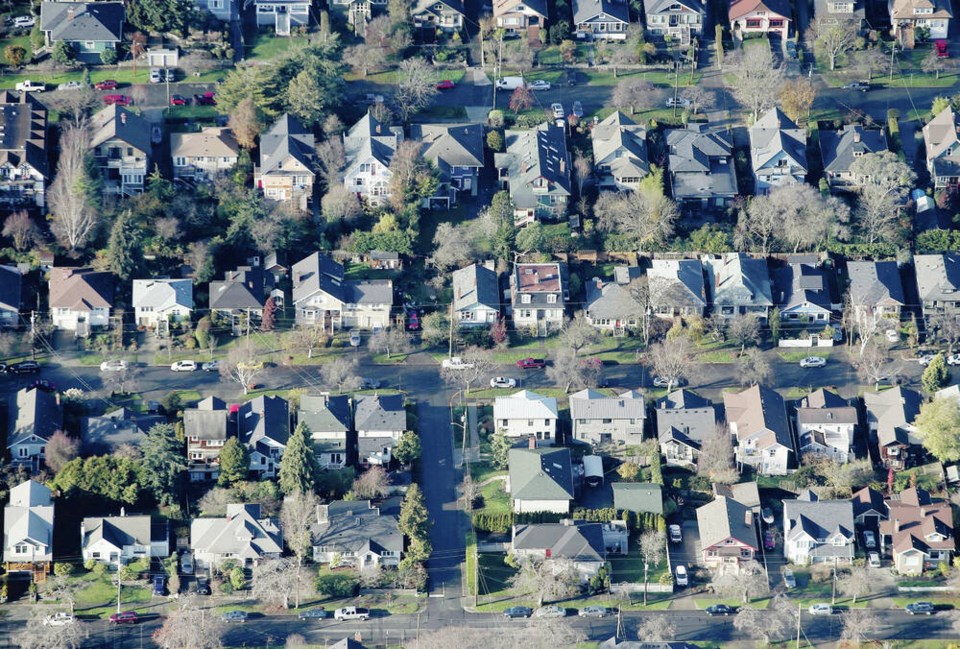Conventional assumptions about North American city-planning policies support the notion that opposition to zoning reform is not only firmly entrenched, but a popular majority view.
However, when we scratch the surface and begin to delve into some of the many (endless) surveys that have been carried out in municipalities continent-wide — and some recent pioneering legislation in this sphere — we see a different picture where the unexpected popularity of zoning reform pops up over and over again.
Let’s start in Vancouver, where governments have been chipping away at liberalization of residential zoning for almost 20 years. The stated intentions for the upcoming city-wide plan include allowing more diverse forms of housing on more land, but the final shape is unclear. What is clear is Vancouverites’ opinion on the topic.
The results of a fall 2021 city-commissioned survey were a resounding rejection of the status quo; 78 per cent of survey respondents agreed that Vancouver should have a range of housing options in all neighbourhoods.
This kind of broad alignment on an issue often painted as controversial brings up some interesting questions.
First, what does this say about the framework for permitting new housing, which is supposed to reflect the democratic “will of the people?”
Second, what can cities do to capitalize on this growing sentiment and further their goals of increasing housing supply? Possible answers to these questions may be found in some unlikely places.
Our second study of a city in the midst of some drastic, generational changes brings us to the boomtown of Charlotte, North Carolina. With a population of more than 2.5 million, it is in some ways an archetypal American city; after years of suburbanization, the downtown population is now growing, driven by changing lifestyle priorities and unaffordability.
Faced with a need to tackle increasing housing costs and development pressures in the city centre, a new city-wide plan was created under the auspices of Taiwo Jaiyeoba, the enterprising director of planning.
The key goal of the plan was to broaden the areas where multi-family housing could be built, while tying into existing and planned transportation infrastructure, all tailored to the city and its cultural norms. Sound familiar?
The “Made in Charlotte” solution was to split residential areas into two zones, as opposed to the typical North American system of dozens. (Victoria has hundreds of zones.)
Neighbourhood 1 and Neighbourhood 2 were all they needed — the former allowing for single-family homes, houseplexes and small apartment buildings, and the latter for larger multi-family buildings.
This appealed to the community because of the striking simplicity and transparency inherent within the system. Development pressure is relieved from the areas that were previously being overwhelmed, and densification can follow a rational course rather than proceed as a frenzy driven by the need to make use of small pockets of suitably zoned land.
Finally, to Victoria. Starting with the early engagement summary for the “Missing Middle Housing Project,” we can see that residents are well-aligned on baseline priorities.
When residents were asked what they considered most important about new housing in their neighbourhoods, by far the most popular option was “Creating more housing choice so families and other households can stay in Victoria.”
Overall, a resounding 92 per cent of respondents agreed that Victoria’s neighbourhoods should have more housing diversity.
On a more granular level, we can look at the results of the Fairfield Gentle Density Survey from fall 2018, where a majority of respondents supported adding density near Cook Street Village and along Fairfield Road.
To further emphasize this consensus, participants even showed majority support for densification on all regular lots — up to six units per lot. In short, we see the same results again and again, whether locally in Fairfield, Burnside Gorge and Vic West or more broadly in places like Vancouver, Edmonton, Minneapolis, Portland, Berkeley and Cambridge.
On top of this proven support for densification of our established neighbourhoods, there exists a moral and practical obligation to ensure the next generation inherits a healthy and sustainable environment.
Statistics Canada data from 2021 shows Victoria’s neighbourhoods only experience an increase in population of children when new housing is built.
This means that areas where housing may already exist — but isn’t being added — have a net loss of children year-over-year. In other words, the regional areas gaining the most children right now are where we permit the most new homes to be built — currently a fact that results in urban sprawl.
This type of development has been proven to have detrimental effects not only on the planet, but on human health outcomes as well. Not everyone can or will want to live in the city, but we need to ensure we limit this encroachment into our wild spaces, for the good of everyone.
Cities everywhere are finding ways to nurture vibrant culture and economies, create kinder and more accessible pathways to suitable housing and evolve to become better versions of themselves.
Look around, ask the next stranger you see at the dog park or pickleball court — you’ll find most of us want the same for Victoria.
• To comment on this article, write a letter to the editor: [email protected]



